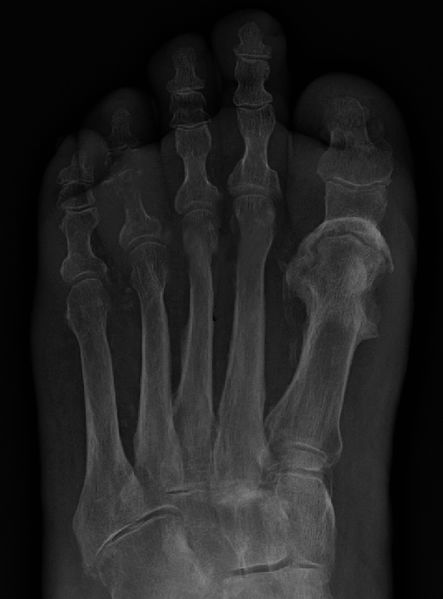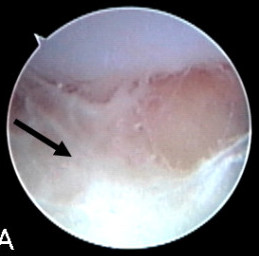Difference Between Osteomyelitis and Septic Arthritis
Key Difference – Osteomyelitis vs Septic Arthritis
Both osteomyelitis and septic arthritis are two infections affecting the skeletal system. These infections can affect any joint or bone in the body and are most commonly caused by Staphylococcus aureus. An infection of the bones is identified as osteomyelitis whereas an infection of the joints is called septic arthritis. This is the key difference between osteomyelitis and septic arthritis. It is important to identify the difference between osteomyelitis and septic arthritis in order to manage and treat these conditions properly.
CONTENTS
1. Overview and Key Difference
2. What is Osteomyelitis
3. What is Septic Arthritis
4. Similarities Between Osteomyelitis and Septic Arthritis
5. Side by Side Comparison – Osteomyelitis vs Septic Arthritis in Tabular Form
6. Summary
What is Osteomyelitis?
Bacteria is the commonest cause of osteomyelitis. The chance of fungi giving rise to this condition is very remote. A majority of fungal causes are associated with chronic osteomyelitis.
Pyogenic Osteomyelitis
This is the commonest type of osteomyelitis, and it mainly affects children. The disease pattern varies with the changes in the anatomical structure of the bone in different age groups.
How do Pathogens Enter the Bones?
The commonest route of entry of pathogens is the blood. Transient bacteremia and septicemia, following a dental procedure or laparoscopic surgery, can spread into the bones, giving rise to osteomyelitis. IV drug abusers are at a high risk of developing this condition via the hematogenous spread of pathogens entering the body from contaminated needles.
Organisms can spread into the bones from the adjacent suppurative foci as in chronic mastoiditis. Direct implantation of the pathogens can happen in compound fractures.
Causative Agents
In children and adults
Neonates
- Haemophilus influenza
- Group B streptococci
Variation of the Disease Pattern with Age
In children, the metaphyses of the long bones have the highest perfusion because of their high metabolic demand. But in adults, vertebrae get the richest blood supply. Therefore, metaphyses of long bones and vertebrae are the most vulnerable sites to in children and adults, respectively.
The epiphyseal circulation and metaphyseal circulation happens separately in children. But in the neonates, the epiphyseal vessels communicate with the metaphyseal vessels, increasing the likelihood of an infection in the metaphyses spreading into the epiphyses. Neonatal osteomyelitis mostly occurs in shoulder and hip. These two have intraarticular metaphyses. Therefore, the subperiosteal tracking of puss from these metaphyses into the joint space can cause septic arthritis.
Pathogenesis of Osteomyelitis
Colonization of bacteria in the bones following bacteremia or septicemia gives rise to acute inflammation and suppuration. With the accumulation of the inflammatory infiltrate the intraosseous pressure rises. This phase is called the acute osteomyelitis in clinical medicine. The patient is usually febrile and complains of severe pain at the infected site.
If not treated, the increased intraosseous pressure can compromise the blood supply to the affected region, leading to the stasis of blood and subsequent thrombosis. The ultimate result of this process is the ischemic death of the bone forming fragments called the sequestra. Once these sequestra are formed, it is impossible to eradicate the bacteria from them due to the lack of blood supply. Eventually, the disease progresses into chronic osteomyelitis.
As a healing mechanism, the periosteum starts to produce a new bone called the involucrum around the sequestra. This is a characteristic feature of the chronic osteomyelitis.
Complications of Osteomyelitis
- Formation of abscesses
- Septic arthritis
- Bone deformities
- Pathological fractures- pathological fractures in the vertebrae can cause neurological deficits
- Squamous cell metaplasia of the sinus tracts can cause squamous cell carcinoma
- Secondary amyloidosis
- Septicemia
Investigations
- X-ray
- Total white cell count and differential count
- ESR and C reactive protein

Figure 1: Osteomyelitis of the first MTP
Tuberculous Osteomyelitis
In developed countries, this mainly occurs in the immune-compromised individuals. Usually, it is the vertebrae that are commonly affected by tuberculous osteomyelitis.
Organisms can reach the bones via blood, lymph or as a direct extension from the affected sites such as lungs and hilar lymph nodes.
Brodie’s abscess
This is a localized, subacute and indolent form of osteomyelitis.
What is Septic Arthritis?
Septic arthritis is the inflammation of the joints due to the invasion of synovial membrane by microbes.
Risk Groups
- Children
- Diabetic patients
- People with joint prostheses
- IV drug abusers
Common Pathogens
- Staphylococcus aureus
- Hemophilus influenza
- Neisseria gonorrhoeae
- Gram negative bacilli
Routes of Entry
- Hematogenous spread
- Direct extension from osteomyelitis
- Direct trauma such as penetration injuries
Clinical Features
- Fever
- Malaise
- Edema around the affected joint
Complications of Septic Arthritis
- If not treated properly damages to the underlying structures can give rise to limp. Septic arthritis is known to increase the risk of osteoarthritis in the later life.
- Septicemia

Figure 02: Septic arthritis as seen during arthroscopy
What are the Similarities Between Osteomyelitis and Septic Arthritis?
- Both conditions are infections affecting the skeletal system
- Staphylococcus aureus is the commonest causative agent of both osteomyelitis and septic arthritis
What is the Difference Between Osteomyelitis and Septic Arthritis?
Osteomyelitis vs Septic Arthritis | |
| An infection of the bones is identified as the osteomyelitis. | Septic arthritis is the inflammation of the joints due to the invasion of the synovial membrane by the microbes. |
| Effect | |
| This affects the metaphyses or epiphyses of the bones. | This affects joints. |
Summary – Osteomyelitis vs Septic Arthritis
Osteomyelitis is the infection of bones whereas septic arthritis is the inflammation of the joints due to the invasion of the synovial membrane by the microbes. This is the main difference between septic arthritis and osteomyelitis. These two conditions should be suspected whenever a patient complains of any related symptoms. Assessment of the risk factors and identifying the individuals with risk factors is important in reducing the incidence of the disease.
Download PDF Version of Osteomyelitis vs Septic Arthritis
You can download PDF version of this article and use it for offline purposes as per citation note. Please download PDF version here Difference Between Osteomyelitis and Septic Arthritis.
References
1. Kumar, Vinay, Stanley Leonard Robbins, Ramzi S. Cotran, Abul K. Abbas, and Nelson Fausto. Robbins and Cotran pathologic basis of disease. 9th ed. Philadelphia, Pa: Elsevier Saunders, 2010. Print.
Image Courtesy:
1. “Osteomyelitis of the 1st MTP” By James Heilman, MD – (CC BY-SA 4.0) via Commons Wikimedia
2. “SepticArth2011 (cropped)” By Tetsuo Hagino, Masanori Wako, Satoshi Ochiai – (CC BY 2.5) via Commons Wikimedia
ncG1vNJzZmivp6x7pbXFn5yrnZ6YsqOx07CcnqZemLyue8OinZ%2Bdopq7pLGMm5ytr5Wau2670q2cqKWpmrmqwMisZJqmlGLDtHnSnqetoZNirrPAx6ugraGjZA%3D%3D